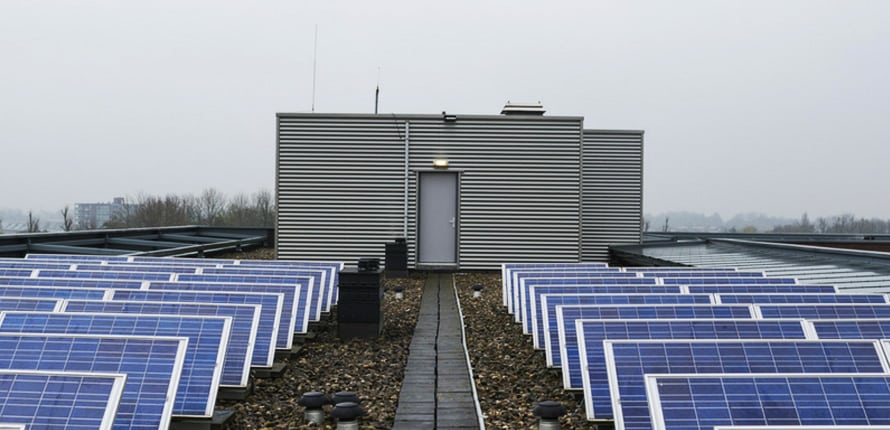With electricity storage solutions maturing, the premises of conventionally structured energy systems are being challenged, offering to African utility companies and entrepreneurs a unique opportunity to lead the transformation of this sector. Under the traditional model, utility companies have typically sought to secure constant sources of power which, at the very least, matches the lowest point of their demand curve (the baseload). Using only renewable energy such as wind or solar, this would prove to be quite challenging because the overall power generation would constantly fluctuate on an hourly, daily and even seasonal basis. Energy storage is challenging this model by allowing a deeper penetration of renewable sources.
Beyond the risk of not having enough energy during the peak demand periods, the variation in the energy supply leads to technical issues. An optimal balance between the demand and supply of electricity (the system frequency) is essential to preserve the integrity of the grid. Consequently, the system frequency will be much harder to regulate with intermittent sources of energy. Solar power producers have actively sought ways to limit the impact of the fluctuation of their electricity production by striving toward the development of better performing batteries. Today, these batteries have the capacity to store power for up to half a day with limited energy loss. They can also release electricity almost instantly when the system load increases. Even the new wind farm designs, which traditionally were not equipped with storage systems, have recently begun to include batteries in an attempt to smooth out wind energy production issues relating to predictability, frequency and ramp control.
Unfortunately, electricity storage remains to date a topic mostly discussed when it comes to battery equipment to be installed for a specific renewable energy project, especially in Africa. It is seldom put forward as a project in itself with the aim of improving grid stability, reliability and resilience. The multiplicity of different electricity storage technologies and the various benefits that each of them can bring are therefore often overlooked. The chart below shows several of these technologies and their development phases:
Figure 1: Maturity of Energy Storage Technologies – Source: International Energy Agency – Energy Storage Technology Roadmap Report, OECD/IEA (2014)
Many of these have different intended capacities and discharge durations, which will allow them to contribute in multiple ways to the optimization of overall electricity production (see Figure 2).
Figure 2: Power Requirement vs Discharge Duration for Select Applications –Source: International Energy Agency – Energy Storage Technology Roadmap Report, OECD/IEA (2014)
The integration of some of these technologies in a grid will determine its total storage capacity, potentially featuring rapid response and emission-free operations on one hand and seasonal storage capacity on the other. The storage units will be charged or discharged in response to an increase or decrease of the system frequency to keep it within the pre-set limits while reducing the loss of the energy surplus generated during peak production periods. Furthermore, it will provide energy security/resiliency, an aspect which is becoming particularly relevant with the rise of unstable weather conditions. Thus, the potential of these technologies leaves little doubt that at least some of them will become essential tools in designing and improving all electrical grids.
But then why should energy storage technologies matter more in Sub-Saharan Africa than anywhere else? Because they will enable African utility companies to rethink their approach to baseload at a critical time in the development of their grid.
Faced with a daunting energy deficit, African utilities have a strong tendency to focus on baseload power projects that have the potential to significantly increase the overall capacity of their grids. Other than for hydroelectric projects, this approach typically excludes most renewable energy solutions and will most likely imply capital-intensive projects. However, in the African context, the mere cost of a traditional baseload power plant poses significant challenges when seeking financing. Furthermore, the low rate of connectivity to the grid makes it difficult to prove that there will be a demand able to absorb such a significant increase in capacity, exacerbating other already existing bankability issues. Hence, reaching financial close is difficult and each failure, a significant setback for a country in its progress toward energy sufficiency.
Smaller and more flexible, renewable energy projects are easier to finance and can provide early stage grids with incremental increases in supply capacity which will more closely track their growth in demand. Energy storage solutions have therefore the potential to change the current dynamics by pushing renewable energy projects into a new role of baseload power generation units and consequently accelerating the development of the power generation capacity of many African countries. This will open up the marketplace for renewable energy projects in Africa to a greater degree than anywhere else because of the early stage of most grids.
It is true that several electricity storage technologies are still too expensive to be viable and that others will need more time before being commercialised. However, as it was the case for renewable energy, the cost of many of these technologies are expected to rapidly decline through competitive innovation and economies of scale. Energy storage technologies will be at the centre of the transformation of our conventionally structured energy markets and represent a unique opportunity for early stage electrical grids to lead the way towards fully optimised energy systems. It will allow African utility companies to use a greater mix of energy sources and enable them to significantly improve the efficiency of their overall electricity production.
